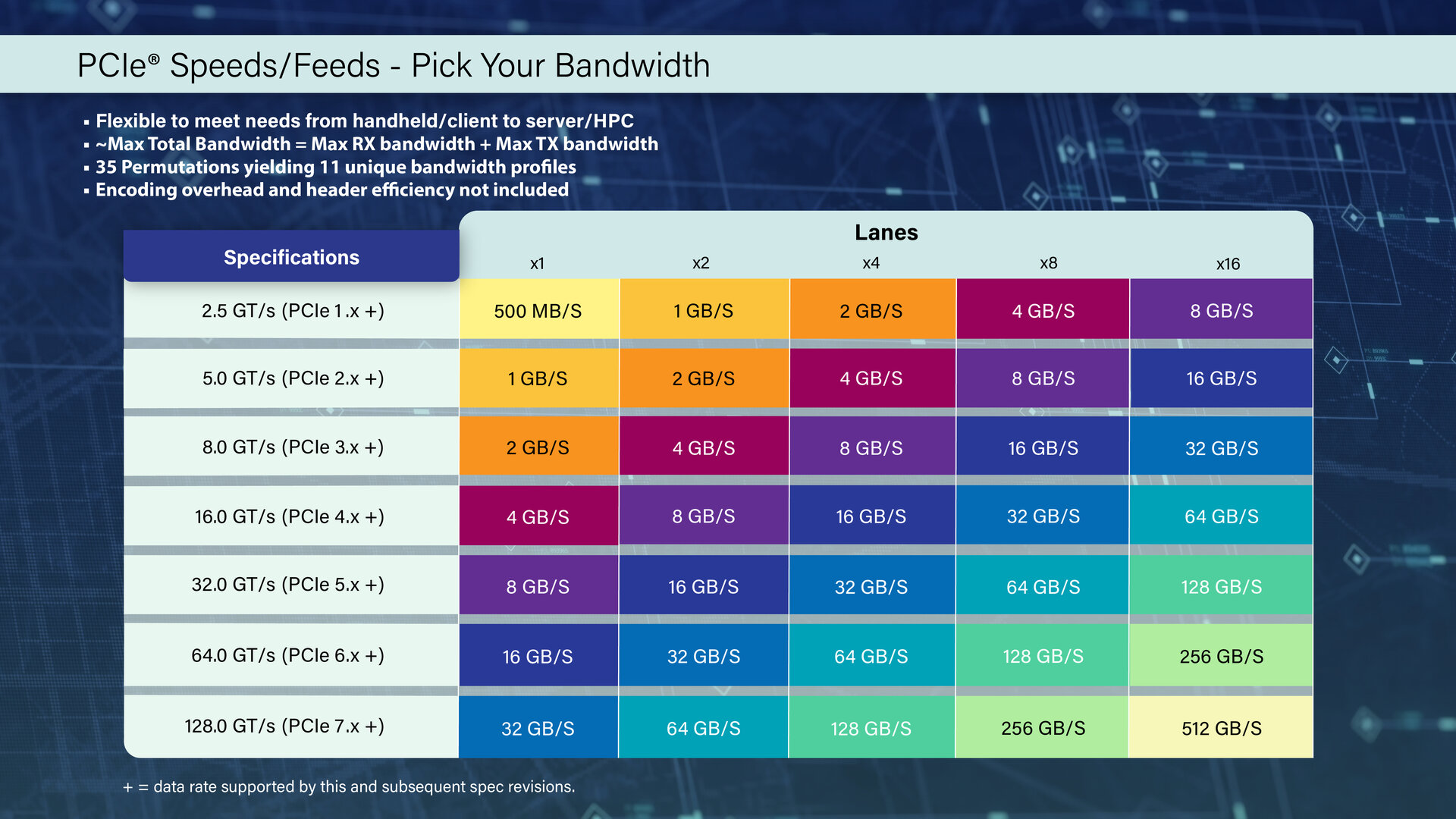The PCI-SIG has limited the expected release date of PCI Express 7.0 to 2025. As with every new generation, the data transfer rate should double again. With PCIe 7.0 this means up to 256 GB/s (gross) with 16 lanes in one direction.
PCIe 7.0 = 4 ×PCIe 5.0
The transmission rate increases to around 16 GB/s per line and per direction with PCIe 7.0, with a maximum configuration with 16 lines (PCIe 7.0 x16) the speed is 256 GB/s. However, since PCI Express enables dual simplex operation with simultaneous data transfer in both directions, the PCI-SIG advertises with 512 GB/s – PCIe 6.0 achieves analogous 256 GB/s, 5.0 128 GB/s and 4.0 64 GB/s . As with PCIe 6.0, four-stage pulse amplitude modulation (PAM4) is used.

Among other things, PCIe 7.0 is intended for areas of application such as 800G Ethernet, artificial intelligence and machine learning, high performance computing (HPC), but also quantum computers and the military. During development, the focus should be on “channel parameters and range”. At the same time, it is important to keep an eye on latencies and backwards compatibility and to improve energy efficiency.
First of all, PCIe 5.0 and PCIe 6.0 will come
The fact that PCIe 3.0 and PCIe 4.0 are currently still common in PCs and servers makes it clear that this is still a long way off. The PCIe 5.0 specification, which was approved three years ago, is still rarely used and PCIe 6.0, which was only released in January of this year, will be a few years away.
While Intel Already supporting PCIe 5.0 with Alder Lake, AMD will soon catch up with the new AM5 platform for Ryzen 7000. In the second half of the year, PCIe 5.0 SSDs can be expected to be the first to benefit from the updated interface in desktop PCs. It is not yet known whether the upcoming GPU generations from AMD (RDNA3) and Nvidia (Ada) will switch to PCIe 5.0 for connecting the graphics card.

